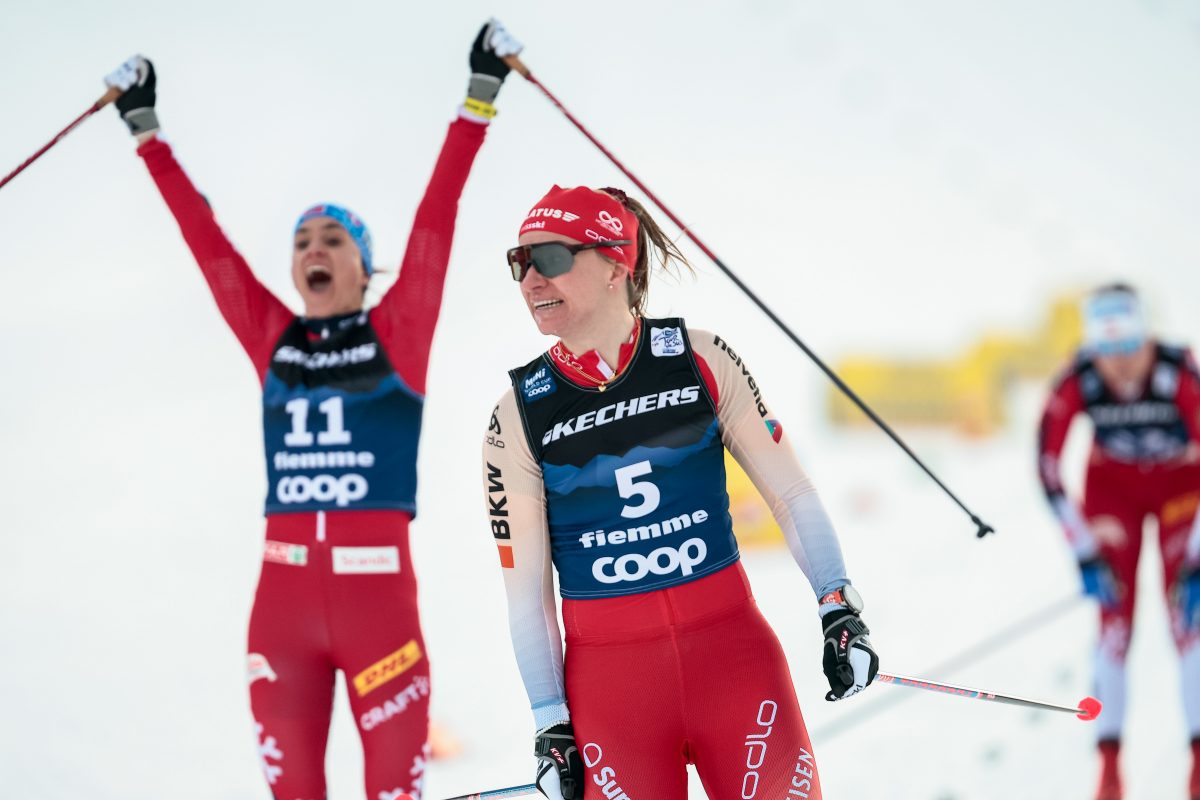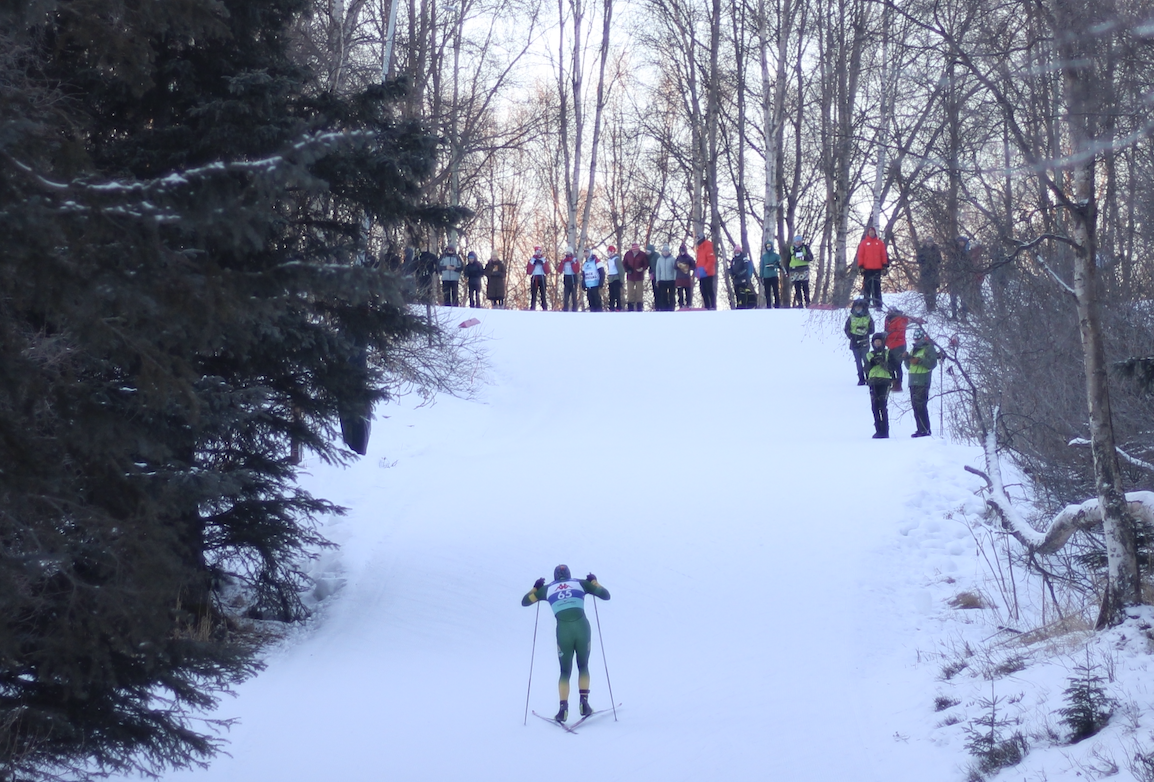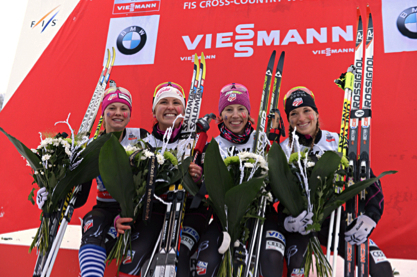
A new World Cup season dawns for the United States, and the future looks bright with expectations understandably high. Stocked with the best collection of talent since the Bill Koch years, the U.S. can deploy multiple threats in virtually any event — and the timing couldn’t be better with the Olympics just two months away.
Coming off a year where Kikkan Randall defended her Sprint Cup title and placed third in the overall World Cup, Andy Newell was fifth in the Sprint Cup, and Randall and Jessie Diggins captured the first-ever cross-country World Championship gold for the team, the U.S. is now established as one of the top teams on the circuit.
To put some numbers on this claim, here are the Nation’s Cup rankings for the U.S. over the last six years:
Year Overall Men Women
2008 14 10 15
2009 15 12 17
2010 15 12 16
2011 13 12 10
2012 8 12 6
2013 6 11 5
This ranking is based solely on World Cup points scored, and thus is a direct indicator of performance. It should be noted as well that with a total of 2,708 total points in 2013, the U.S. women were only 69 points behind Russia in third.
Such a constant rate of improvement will be difficult to sustain but there are many reasons to be optimistic.
On the women’s side, seven athletes start the season in Europe having scored World Cup points in the past. The men’s roster is slimmer, but still has high-end potential with a mix of established veterans and up-and-comers.
Without further ado, we will introduce the top players, and then follow up with an overview of the upcoming season, and what to expect.
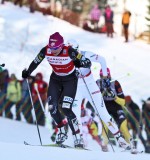
Kikkan Randall, A-Team
Key Stat: Nine World Cup podiums in 2013, including five victories
2013 World Cup Ranking: 3rd (10 distance, 1 sprint)
Randall’s accolades go on for pages, but it suffices to say that the American star is one of the top skiers in the world, as evidenced by her third place finish in the World Cup last season. Day in and day out she is the best skate sprinter, and after earning her first classic sprint podium in the World Cup opener, she is now as well-rounded as you could hope any skier to be. Expect her to be competitive in every race she starts, and the favorite to win the Olympic sprint.
According to US Ski Team Head Coach Chris Grover, Randall will not race the Tour de Ski this year as she prepares for Sochi.
Liz Stephen, A-Team

Key Stat: Scored points in 19 World Cup events
2013 World Cup Ranking: 20th (15 distance, 71 sprint)
After breaking through in 2012, Stephen took it to another level last year, consistently finishing in the points in distance races, and peaking with a 5th place in the 10 k freestyle at World Championships in Italy. Stephen is known for skating, particularly her ability climb steep hills. But she has also improved her classic skiing, and thus can be a factor in the skiathlon.
The Olympic 10 k is a classic event, but the 30 k is freestyle. While Stephen is decidedly not a sprinter, the nature of the women’s races (high pace; fragmented packs) plays well to her strengths. A medal is a stretch in that event, but not inconceivable. A fierce competitor, the one sure thing is that Stephen will be battling.
She is also one of the best hunters on the circuit, thriving in stage events that culminate with a skate leg, and give her an opportunity to climb the rankings. A member of the relay team that finished 3rd in the World Cup opener last season, Stephen is a favorite to handle a skate shift at the Olympics. The current plan is for her to race the Tour de Ski.
Jessie Diggins, A-Team
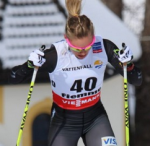
Key Stat: Won her first World Championship gold at age 21, one year younger than Norway’s Marit Bjørgen when she captured hers back in 2003.
2013 World Cup Ranking: 36th (34 distance, 44 sprint)
Diggins paired with Randall for World Championship gold in the team sprint, creating the indelible image of the young American holding the lead with a single pole. Like Stephen, Diggins is a stronger skater, and still at the stage of her career where she is making significant improvements.
She just missed cracking the Red Group last season, ending the campaign ranked 36th overall. She anchored the US relay team to bronze in the World Cup opener in Sweden, and fourth at the the World Championships. As her classic chops come up, Diggins looks like she could excel in all facets of the sport. In Sochi she has the potential for a top result in any of the skate races, including the sprint, and should be a part of a medal-contending relay team.
Like Stephen, Diggins is slated to race the entire Tour de Ski.
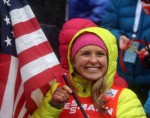
Holly Brooks, A-Team
Key Stat: 5th in the World Cup 10 k freestyle in Gällivare, Sweden last season
2013 World Cup Ranking: 35th (27 distance, 43 sprint)
Since breaking onto the World Cup circuit in earnest in 2012, Brooks has demonstrated significant versatility — she has the potential to score points in just about any distance and in both disciplines. She scrambled for the U.S. relay team in Gällivare last season, helping the quartet to 3rd.
She has demonstrated exceptional toughness, finishing the 2012 Tour de Ski with a broken wrist, but historically her competitive drive has made it difficult to skip races. This season, however, she is planning an abbreviated first run through in Europe. After just three weeks of World Cup action, she will return home to Alaska for a training block in preparation for the Olympics. As such she will not be racing the Tour de Ski.
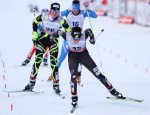
Ida Sargent, A-Team
Key Stat: Advanced to World Cup sprint heats five times in 2013.
2013 World Cup Ranking: 39th (53 distance, 22 sprint)
Sargent is often mistakenly thought of as a sprint specialist, but she has proven that she can mix it up in the longer distances as well. Last season she placed 14th in the 15 k skiathlon in Canmore, 18th in last year’s Kuusamo mini-tour. and 25th in the 30 k classic mass start at World Championships. Her forté has been classic, and the classic sprint is still her best event.
While she did not start any of the World Cup relays last season she is a candidate for a classic leg, giving the USST options. While she was unable to advance out of a tough quarterfinal heat in last weekend’s classic sprint, Sargent showed her speed is in a good place with a strong qualification. The 10k classic in Lillehamar should be a good event for her, with the next classic sprint coming on December 21st in Asiago, Italy.
Sargent will look to maintain her Red Group sprint position, which is highly beneficial to the team budget.
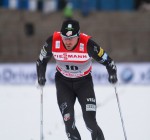
Andy Newell, A-Team
Key Stat: Four appearances in World Cup sprint finals
2013 World Cup Ranking: 29th (70 distance, 5 sprint)
Newell, the longest tenured member of the US men’s team, bounced back after a rocky 2012 to finish 5th in the Sprint Cup, and re-establish himself as one of the top short distance skiers on the circuit. Newell also scored distance points for the third straight season, setting a career high.
In addition to his individual results, Newell has turned in strong performances in the relay, showing an ability to stick close to the leaders on the scramble leg.
With top-6 results in both classic and skate sprinting last season, Newell does not favor either discipline. The skate sprint in Sochi will be a big target. In eight World Championship and Olympic sprint starts, Newell has advanced to the finals just once. Regardless, he should be a season-long threat in any sprint he contests.
Newell plans on racing the first four stages of the Tour de Ski, before withdrawing in order to prepare for the Olympics.
“I’m in Europe for the whole winter I might as well do some ski racing,” Newell said in an interview. “I think this is a good way to prepare for the Olympics, but for me pushing through the whole thing doesn’t make sense.”
Newell doesn’t see this as his final Olympics.
“Skiing is my lifestyle and it’s all I know it doesn’t matter what year it is,” he wrote. “I think that regardless of how this year goes, there are still some goals I want to accomplish in skiing, both on the World Cup, Tour de Ski, and World Championships. I’m not going anywhere soon.”
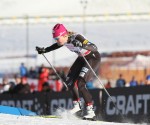
Sadie Bjornsen, B-Team
Key Stat: Nine top-30 finishes in 11 World Cup individual starts last season
2013 World Cup Ranking: 54th (56 distance, 37 sprint)
Bjornsen has struggled with chronic injuries the past two years, but still managed to excel at the World Cup level in 2013. This year she is starting in Europe, and she has not missed a beat. With the injuries well-managed, she has demonstrated top fitness already. She qualified third in the Kuusamo sprint, and placed seventh in the 5 k classic.
In addition to her points races, Bjornsen scrambled for the World Championship relay team that placed fourth, and already has a World Cup medal, teaming with Randall to place second in the Dusseldorf, Germany Team Sprint in 2012.
She is a candidate for the Olympic Relay team and the Team Sprint.

Sophie Caldwell, B-Team
Key Stat: 20th in World Championship Sprint
2013 World Cup Ranking: 87th (– distance, 53 sprint)
Caldwell got her first taste of World Cup racing last season and showed she good handle the big show. After two top-30’s in Canadian World Cups, she placed in the top-40 in three of four World Cup sprint starts.
The highlight of her season was in Val di Fiemme, Italy, where she placed 20th in the classic sprint, just one place behind Randall.
Caldwell is still developing, and will certainly have her fair share of ups and downs, but she is yet another weapon in the arsenal that is the US women’s team, and has a good shot at a ticket to Sochi.
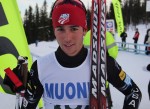
Noah Hoffman, B-Team
Key Stat: Fastest time of the day in Kuusamo skate pursuit
2013 World Cup Ranking: 48th (36 distance, — sprint)
Hoffman had an excellent 2013 campaign, cracking the top-10 for the first time in his World Cup career, and showing that he can ski in the front pack of World Cup mass start races. He remains a threat only in distance events, but can overcome a poor sprint to place just fine in a stage event.
Hoffman kicked off the Olympic season in fine form. While his sprint, and 10 k classic in the Kuusamo mini-tour were nothing special, he turned more than a few heads when he skied the fastest race in the final pursuit, skiing all the way up to ninth overall.
Still just 24, Hoffman has plenty of room to keep improving. Known for his focus and work ethic, Hoffman should be a mainstay on the team for years to come, and is the best shot for a men’s Olympic medal this side of Andy Newell, though he doesn’t see himself as such.
“I am not a serious medal contender at these Olympics,” Hoffman wrote in an email. “This season is another chance for me to progress towards my goal of becoming a medal contender, even a medal favorite for the next Olympics and beyond. Every start I get is an opportunity for me to take a step towards that goal.
To that end, he plans on racing the entire Tour de Ski.
“I am looking forward to it as an important part of my season and an opportunity to gain a lot of race experience very quickly,” he explained.
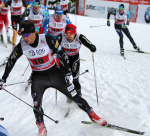
Simi Hamilton, B-Team
Key Stat: Finished 13th in two individual sprints in 2013
2013 World Cup Ranking: 91st (– distance, 46 sprint)
Hamilton struggled with illness last year, taking a step back from a strong 2012 season when he placed 22nd in the Sprint Cup standings. He qualified for the heats six times, and advanced to the semifinals three times. Additionally, he finished outside the top-30 and inside the top-34 another four times. The speed and endurance were there. The big question is whether or not he can return to that level. Last year he managed just three appearances in the heats, and never made it out of the quarterfinals.
Hamilton will be looking to re-establish himself, and grab a berth on the Sochi squad. Over the last several years, when healthy, he has paired with Newell in the team sprint. The USST does not have any other proven options, but plenty of potential, so Hamilton will need to earn that start at the Olympics.
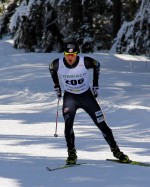
Erik Bjornsen, B-Team
Key Stat: 10th in the classic sprint at U23 Championships in Liberec, Czech Republic
2013 World Cup Ranking: —
Bjornsen made his first eight World Cup starts in 2013, and added four more at the World Championships. With Hamilton unable to compete in the team sprint, Bjornsen stepped in to gain valuable experience. He has started this year racing domestically, but will make his way to Europe. Initially tagged as a sprinter, Bjornsen has brought his distance racing on par, and has the potential to excel in all events.
He is still early in his career, and 2014 should not be a peak.
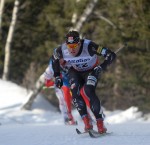
Kris Freeman
Key Stat: Top 15 in both Canmore World Cup races in 2013
2013 World Cup Ranking: 75th (50 distance, — sprint)
In a controversial move, Freeman was not re-nominated to the USST, and is racing on the World Cup this fall on his own dime. Freeman is the most successful U.S. skier after Kikkan Randall and Bill Koch, having twice placed fourth at World Championships. The challenges of racing with type I diabetes have been well documented, and Freeman has shown year in and year out, he has top-30 World Cup fitness.
The problem has been consistency, and outside of his Canmore results, he cracked the top-30 just once in 2013. This is likely his last shot at the Olympics, and he will be racing to solidify a spot on the team. When sharp, Freeman is a dangerous relay skier, either in the scramble leg or second classic. Even with his struggles, the only U.S. skier who can push Freeman in a World Cup distance race is Hoffman.
Others
As the overall 2013 SuperTour Champions, both Mikey Sinnott and Rosie Brennan earned World Cup start rights. They will be racing Period I, and with fast European World Cup results the best way to reach the Olympics, Sinnott and Brennan have a head start on their competition back in the States. Historically, neither athlete has cracked the top-30 on the World Cup.
Also currently in Europe are Torin Koos (Bridger Ski Foundation) and Dakota Blackhorse-von Jess (Bend Endurance Academy). They are racing Continental Cup events with the hope of earning a start or two on the World Cup circuit before Christmas.
The one name missing at the beginning of this season is Tad Elliott, who was not re-nominated to the team. After starting 11 World Cup races last year, including both distance relays, and four more races at World Championships, Elliott is racing domestically in an effort to get back to Europe. His best performance of 2013 was a twenty-eighth in the 30 k skiathlon in Canmore, the only time he cracked the points.
With each SuperTour period, there come new leaders, and the potential for different names on the World Cup. In an Olympic year, expect to see athletes take advantage of any start rights they earn.
Olympic Qualification
Some will be gunning for medals, and others just happy to get there, but regardless, the Sochi Olympic Games are the major focus of the season. Four years ago, FIS changed the method of allocating quotas, and the U.S., without many top World Cup results, initially held only eight spots, a number that ultimately rose as other teams declined to fill their full allotment.
While ten athletes ended up representing the U.S. in Vancouver, the announcement of only eight spots created a fair amount of consternation, especially when compared to the 16 in 2006. This time around however, the U.S. will be returning quota slots to the pool — the strong racing by American athletes over the last three years has had a huge impact, and the United States has received the maximum allocation — 20, according to Head Coach Chris Grover.
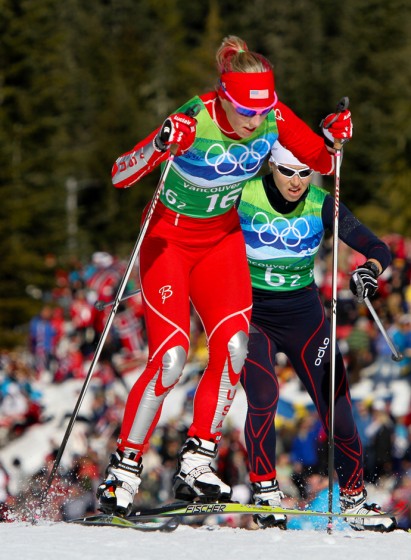
Athletes shouldn’t start counting 20 deep on the FIS ranking lists, however. Grover said that the USST “will absolutely not name a team that’s anywhere near that big.” The reasoning is simple — every nation holds only four start spots per race.
“We’ll fill our start rights, but we won’t bring athletes that we don’t plan on starting,” Grover explained.
The only way to automatically qualify is to be ranked in the top-50 of either the Sprint World Cup Standings, or the Distance World Cup standings as of January 12, 2014. These rankings are based on World Cup points, not FIS points, so the meter started fresh last weekend in Kuusamo.
An important caveat is that only four skiers for men and women may be named off the Sprint Rankings. So if five U.S. women are ranked in the top-50 on the sprint list, the fifth would not receive an automatic berth on the Olympic team.
“We can’t bring people that we aren’t planning on starting, and we can only start four sprinters, so we’re only going to bring four sprinters,” Grover said. “Now, there are a lot of athletes that have a lot of crossover potential between distance and sprint and so we’ll be considering that for sure.”
The next criteria is “Coaches Discretion,” followed by the FIS points list.
While discretion comes before FIS points, Grover made it clear that points will likely have a bearing. “Athletes that have great FIS points already that’s … going to help them when it comes to the overall picture come the middle of January.”
Grover declined to say how many athletes would be taken and what the gender break down might be. He did say that the team plans on filling all start spots.
On the FIS side, an athlete is eligible to compete in the an Olympic race if he or she has a maximum of 100 FIS points. With 120 sprint points, an athlete may start the sprint event, and the 10/15 k if he or she has less than 300 distance points. (Editor’s Note: These standards hold true for countries with at least one qualified starter. There are exceptions for nations with no qualified starters and for the host nation.)
The following U.S. athletes were ranked in the top-50 of either the Sprint or Distance Rankings at the end of last season: Kikkan Randall, Holly Brooks, Liz Stephen, Jessie Diggins, Sadie Bjornsen, Ida Sargent, Andy Newell, Noah Hoffman, Simi Hamilton and Kris Freeman.
Sophie Caldwell just missed the cutoff at 53.
While all points were reset to zero, this does demonstrate that it will be extremely difficult for non-World Cup skiers to qualify for the team, especially on the women’s side.
The Games
Discussion of the Olympics is not going to go anywhere soon, and for good reason. The Games are not the be all and end all, even of this season, but they do provide a singular focus.
Newell has set up his training and racing schedule so he can peak in February, and he said he has focused his interval training with a bit more skating (the individual sprint is freestyle), but the veteran of two past Games, he knows better than to think only of one race.
“Having been there a few times I know it doesn’t help to focus too much on one race,” Newell explained. “I think one of the best ways to prepare for big competitions is by racing World Cups which means skiing at a top level for the majority of the season.”
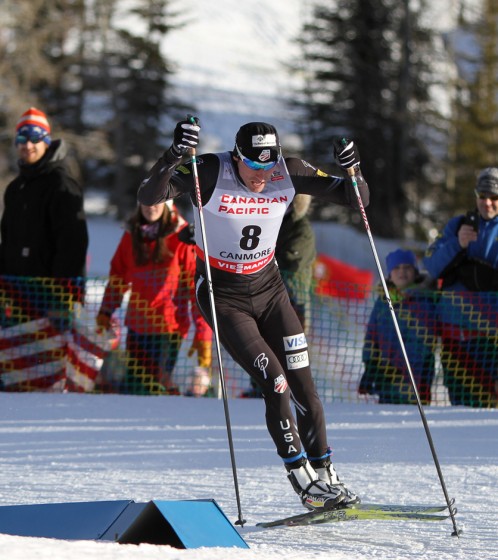
He feels that the U.S. will “probably have the strongest team we’ve ever brought to the Olympics … Any medal for a man or woman will make the games a huge success and will be something that the whole team can celebrate.”
For his part, he feels no extra pressure, just excitement.
Grover also sees the potential of the current group of athletes, saying “very few times, in the history of US cross country skiing, has the program been so uniquely poised to win a medal.”
The aims for the staff are straightforward, yet clearly challenging — process oriented according to Grover. “My goal for the team in Sochi is to keep everyone healthy, to keep them happy and to provide the best ski service possible. That’s rather simplistic, because if we do those things we’re going to be very successful, but that’s gonna be a tall order.”
Tipping the odds a bit more in favor of success, Grover points to the fact that the team has potential in a number of races.
“We’re not suggesting that we want to win a medal on this day, we’re targeting a number of events over there,” Grover said. “And I think our chances are pretty good if we can do those things that I outlined, in terms of keeping everyone healthy, keeping everyone happy and entertained up there in the endurance village, and then providing them with some great skis. Those things have been limiting factors in our success at major championships.”
The team will be well staffed on the support side with nine coaches and wax staff combined. In addition to the World Cup waxing staff of Peter Johansson, Oleg Ragilo, Randy Gibbs, and Cory Wubbels, the tech crew will be joined by Erik Flora of Alaska Pacific University Ski Club, and Zach Caldwell of Caldwell Sport. With Women’s Coach Matt Whitcomb and Coach Jason Cork, Grover describes the group as “our complete championship staff.”
USSA Nordic Program Director Joey Caterinichio will also be onsite to assist with logistics, and there will be a doctor, a physical therapist and a massage therapist. Grover also said the skiers will have access to US Olympic Committee staff as well, including physiologists, nutritionists and additional doctors.
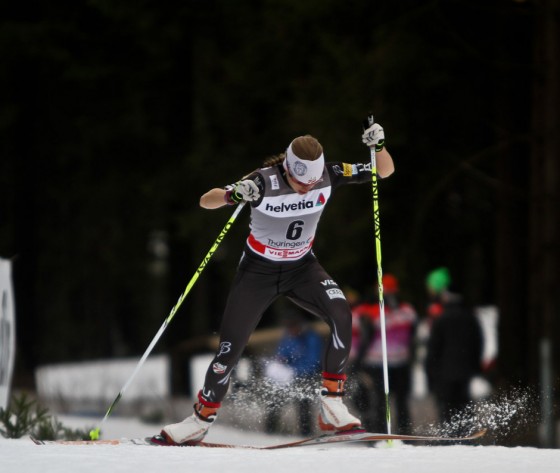
“We’ll have a big staff but that staff will be really focused on providing everything that’s necessary for these guys to ski to their potential,” Grover said.
Four years ago, hopes were high heading into the Olympics. The U.S. had a number of fast athletes, but the expectations may have been unrealistic.
“When we went into Vancouver we hadn’t had a World Cup podium all season … Its rather hard to expect to be successful at an Olympics if you haven’t proven it … on a week to week basis,” Grover said. “I think going into Sochi it’s going to be a pretty different scenario … and that’s going to give us a lot of confidence.”
While the results on the course have elevated the U.S. to one of the top teams in the world, the group has also attracted attention off the snow.
“I think our team has a reputation for being pretty positive, and fun loving, and having a great team atmosphere,” Grover said. “I think there’s a respect for the US athletes for the hard work that they’re doing, and for the way that they carry themselves, and for the atmosphere that they’ve built around themselves.”
Winning medals in the Olympics is one of the hardest tasks in cross-country ski racing. Everyone else is gunning for the same target, and while there is no prize money, and no World Cup points, there is no greater glory. Nothing is guaranteed, but Grover is feeling good about American chances.
“I have no doubt that we’re going to have athletes that are extremely fit, that are at the height of their careers, and are going to be ready to be successful, so we just have to be sure that we keep them healthy and give them some fast boards,” he said.
The Schedule
The World Cup season is already underway, with three more weekends of racing before the Christmas break. After Lillehammer, Norway, and the only pre-Olympic distance relay, the circuit heads to Davos, Switzerland, for a two-day freestyle extravaganza: a skate sprint and 15/30 k skate mass start. Technique switches the following weekend in Asiago, Italy, for sprinters only: a classic individual sprint, and in an Olympic preview, classic team sprint.
After Christmas comes an abbreviated seven-stage Tour de Ski.
Next comes the traditional post-Tour sprint weekend, this year in Nove Mesto, Czech Republic, then a swing through Justyna Kowalczyk’s homeland with a freestyle sprint and a 10/15 k classic in Szklarska Poreba, Poland, and finally back to Italy for the last races prior to the Olympics.
Those races are notable for two reasons — first, they will be identical to the Poland events, 10/15 k classic and skate sprint, and second, they will mark the fourth Italian stop on the circuit this season.
After the Olympics the schedule plays out in standard form – Lahti, Drammen, Oslo and the World Cup Finals in Falun, Sweden.
FIS Olympic Qualification (PDF – scroll down for cross-country)
USST Olympic Qualification (PDF)
— Alex Matthews contributed reporting
Topher Sabot
Topher Sabot is the editor of FasterSkier.

